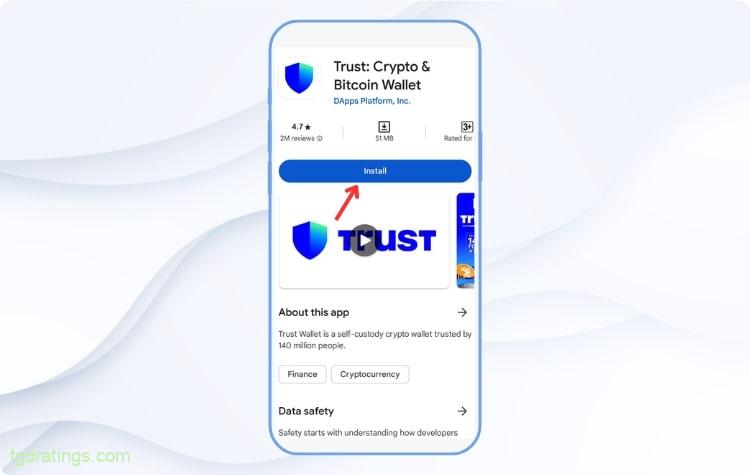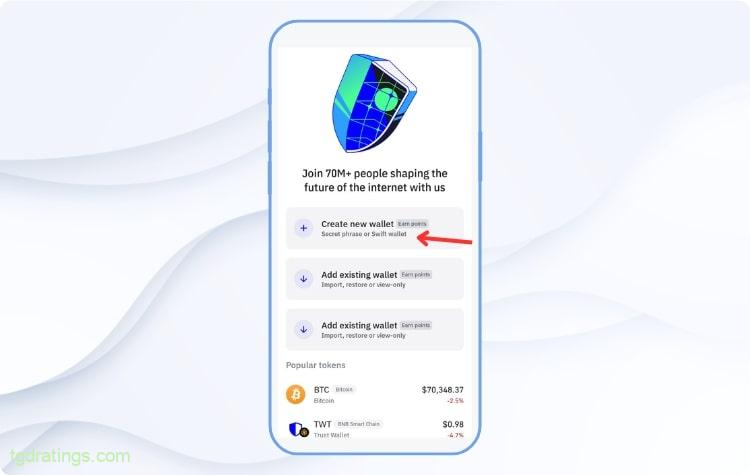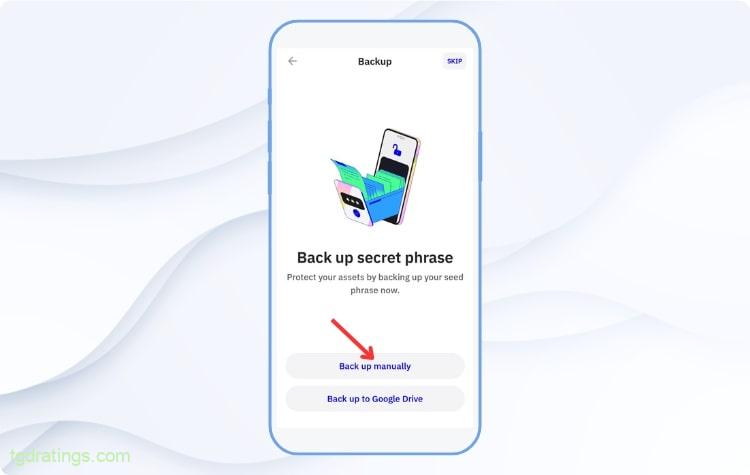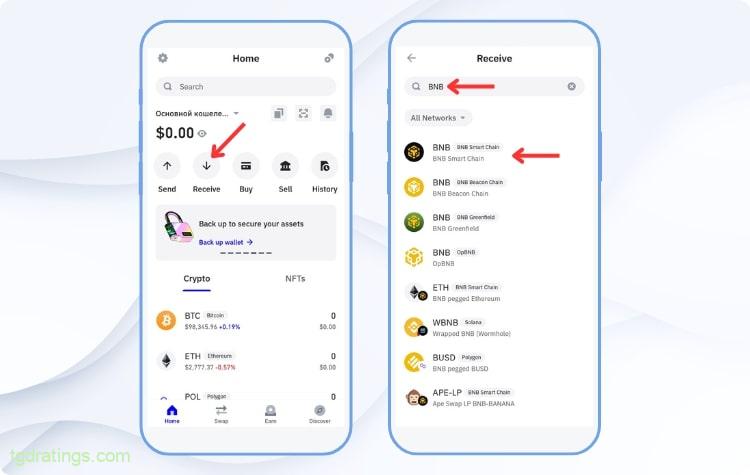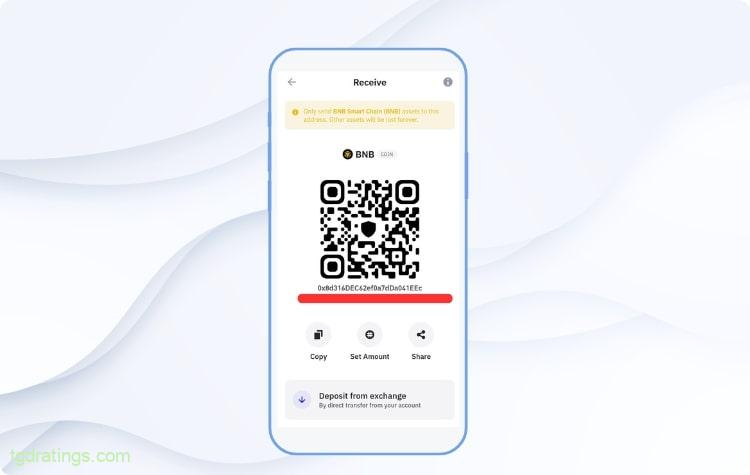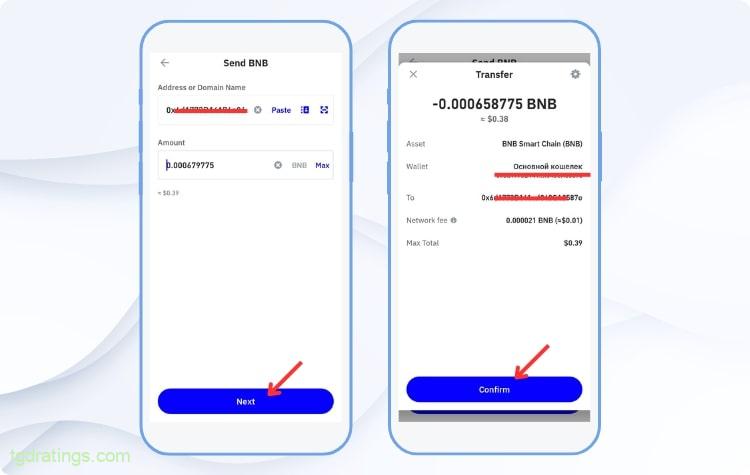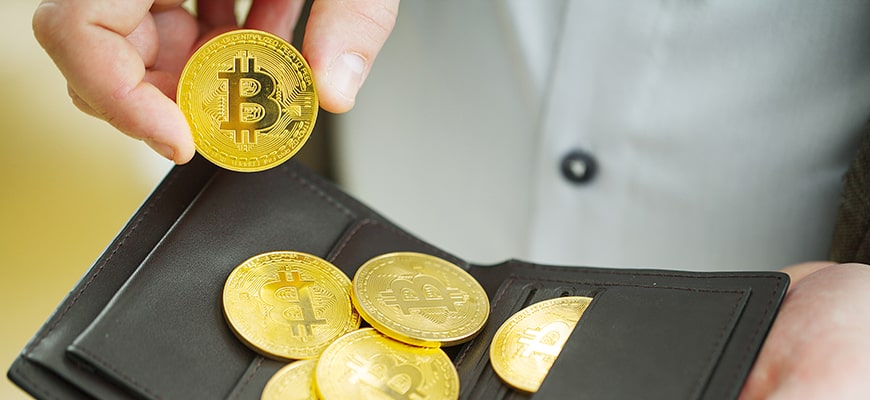How to create BEP-20 (BNB) wallet?
BEP-20 is a token standard that was developed to create and manage tokens on the Binance Smart Chain (BSC) blockchain. This platform is a high-speed and cost-effective alternative to the well-known Ethereum blockchain. Examples of popular tokens operating on the BSC include Binance Coin (BNB), stablecoins Tether (USDT), USD Coin (USDC) and more.
In this article, I will detail how to create a BEP-20 wallet and how to make transactions using it.
What is a BEP-20 wallet?
A BEP-20 wallet is a digital vault for interacting with the Binance Smart Chain blockchain and tokens of BEP-20 standard. There are different types of such wallets: mobile and desktop applications, browser extensions, as well as hardware storage presented in the form of a device. You can choose the most convenient option for you.
All types of wallets share one main function – to provide safe and convenient management of your digital assets. It is important to understand that a cryptocurrency wallet does not store the cryptocurrencies themselves, only private keys. It’s is a unique string of letters and numbers that you get assigned when creating a wallet. Unlike public keys, private keys are confidential and must not be shared.
What is a BEP-20 wallet address and how to find it
The BEP-20 public address (key) is a unique identifier used to receive and send tokens. Much like a private key, it’s a unique string of numbers and letters. You can find your public key in your cryptocurrency wallet app. You can use the blockchain explorer BscScan to check your BEP-20 address. Type it into the search bar and the system will show you which token or transaction is associated with it.
How to create a BEP-20 wallet step-by-step
To use BEP-20 tokens, it is important to have a reliable and functional cryptocurrency wallet. It will provide you with secure asset storage and access to a variety of features. I’ve put together a step by step guide to help you set up your wallet.
Step 1: Choose a trustworthy wallet
The first step is to choose a cryptocurrency wallet that supports BEP-20 tokens. Some of the popular options include Trust Wallet and MetaMask. Trust Wallet is convenient to use on your smartphone, while MetaMask is available both as a mobile application and a browser extension. Both crypto wallets provide safe and secure token storage and are easily set up to work with BSC. For this example, I’ve chosen Trust Wallet.
Step 2: Install and configure your BEP-20 wallet
- Go to Google Play and type the name of the app in the search bar. After that, go to the wallet app page and click Install.
Trust Wallet app page on Google Play - After installation, open the app and select Create new wallet.
Creating a Crypto Wallet - The app will now create a seed phrase consisting of 12, 18 or 24 words. It is better to write it down or to copy it somewhere else to minimise your chances of losing it. Trust Wallet offers two options: copy manually by tapping Back up manually or automatically make a copy by clicking Back up to Google Drive. If you want to skip this step now, tap Skip in the top right corner of the screen.
Creating and Backing Up a seed phrase - As an extra layer of security, the app suggests creating a six-digit password or adding your fingerprint.
- You have successfully registered and now you have access to all cryptocurrency wallet features.
Step 3: Add BEP-20 tokens to your wallet
Let’s show how to add a BEP-20 token using BNB as an example.
- Click the Receive button and in the list of coins that appears select BNB.
Find BNB - After tapping on BNB, the app will generate an address (also available as a QR code) that can be shared with the sender of the coins.
BNB Address
Step 4: Secure and backup your crypto wallet
Cryptocurrency wallet security is a key aspect of dealing with digital assets. One of the most important elements of protection is the secret seed phrase I mentioned above. It is a unique set of 12, 18 or 24 words and it is generated by the cryptocurrency wallet itself during the initial setup.
Why is the seed phrase so important? It is the only way to restore the wallet in case of device loss or application failure. It is impossible to access the funds without it. Write down the phrase on paper and keep it in a safe place, inaccessible to others, and do not give it to anyone.
Crypto wallets that support BEP-20 tokens
Here is a list of popular cryptocurrency wallets that support BEP-20 tokens:
- Mobile wallets are Android and iOS apps. Trust Wallet is an official Binance wallet that supports BEP-20 and many other tokens. MetaMask, originally designed for Ethereum, is easily configured to work with BSC, providing universal access to decentralised applications. Mobile wallets store the private key on your device.
- Hardware wallets are physical devices that allow you to store private keys offline. They require a connection to your computer or mobile device. Thus, the wallet only connects to the internet for transactions. Good examples are Ledger and SafePal.
- Web wallets work as extensions for popular browsers such as Chrome, Firefox, Edge. They are convenient for interacting with DeFi protocols, decentralised crypto exchanges and dApps. For example, MetaMask, Binance Wallet, Bybit Wallet. Web wallets store your private keys on their own servers.
MetaMask or Trust Wallet are better suited for trading and storing small amounts of money. For long-term storage and storing large sums, Ledger or SafePal are better. Hardware wallets provide greater security. But you will have to pay for the device (for example, Ledger cryptocurrency wallet costs $149 on Amazon). Also, if you plan to use DeFi or staking, make sure the wallet supports those features.
How to make transactions with the BEP-20 wallet
Digital wallets allow you to make various transactions with your tokens: sending, receiving, buying, selling and exchanging. All transactions require a small fee, which is paid in tokens BNB. The fee can vary depending on the network load. For the last 5 years the maximum was recorded at the level of 1.079 USD, and the average fee ranges from 0.066 to 0.15 USD. So when working with your wallet, make sure you have enough BNB to pay all the necessary fees.
To send tokens, go to the send funds section of your wallet and specify the recipient’s address, which should also support BEP-20. Transactions on the blockchain are irreversible, so an error in the address will result in loss of funds. Receiving tokens works the same, but now you provide the sender with your address. The tokens will appear in your wallet as soon as the transaction is confirmed on the network. You can check the transaction status in BNB. To do this, you need to paste the transaction ID or wallet address into the search bar. To send BNB tokens from your wallet:
- On the main screen of the app, select BNB coin from the Crypto list, then tap Send.
Sending Coins - On the next page, you will see a field to enter the address Address or the recipient’s Domain name. You can enter the address manually, choose from your address book or scan a QR code. The second field is the amount you want to send. Click Next. In the window that opens, check all the data again and pay attention to the Network fee for this transaction. If everything is correct, click Confirm.
Sending Coins
In case the transaction is not displayed in your wallet::
- Check if the correct address was used.
- Make sure there are enough funds in your wallet to pay the fee.
- If the transaction does not appear on BscScan, it may not have been sent due to a network error.
- Contact your wallet or exchange support if the problem persists.
Conclusion
You can now choose and create your BEP-20 wallet, configure it to work with Binance Smart Chain tokens, and secure your assets. This will give you access to the BSC ecosystem, including managing tokens, participating in DeFi and using decentralised applications, helping you make the most of the blockchain.
Frequently Asked Questions








